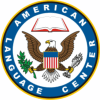Beginner
This level provides the foundation of the structure of the language, gradually building students’ understanding of the basic grammar, vocabulary, pronunciation, and functions of English. The course is aimed at students who have little knowledge or experience with English and are not yet ready for Elementary-level tasks and material. Upon completing this level, students should be able to accomplish basic life tasks in English (e.g., ordering food, asking for simple directions).Elementary
The Elementary level expands on the functions previously studied at the Beginner level, adding a greater variety of vocabulary and grammar to negotiate each speech event. Students entering this level should have a basic understanding of simple sentence grammar and introductory vocabulary circles (e.g. food, travel, self, activities). By the end of this course, students should be able to express simple ideas with a much greater degree of completeness by accurately using an array of function (e.g., quantifiers, determiners) and content (e.g., adverbs, nouns) words.
Pre-Intermediate Basic
Pre-Intermediate Basic level gives students linguistic tools to express and understand ideas more complex than those at the Elementary level. Here is where students begin to not only broaden their knowledge of grammars and vocabulary, but also delve deeper into English linguistic patterns (e.g. prefixes, ordinal discourse markers). Students entering this level should be comfortable with simple sentence grammar with adverbial clauses and a functional vocabulary in the most common areas (e.g. food, travel, hobbies). By the end of this course, students will have been exposed to every major grammatical (e.g., relative clauses, conditionals) and lexical (e.g., phrasal verbs) category in English.
Intermediate Basic
At the Intermediate Basic level, students seek to understand the main ideas of complex text on both concrete and abstract topics, and cultivate technical vocabulary in his/her field of specialization. Students entering this level should have fundamental knowledge of and ability with complex sentence grammar (e.g. relative clauses, reported speech) and be able to talk about most common topics without difficulty. By the end of this course, students should able to produce clear, detailed text on a wide range of subjects and explain a viewpoint on a topical issue giving the advantages and disadvantages of various options.
Upper-Intermediate Basic
With a solid command of major grammatical structures, lexical items, and communicative ability, Upper-Intermediate Basic students begin to refine their English ability with common idiomatic expressions and more technical vocabulary. The gradual shift from adapted to authentic texts provides more learning opportunities of figurative language use, cohesion of discourse, and expansion of technical vocabulary (e.g., fitness and nutrition vs. health). Furthermore, Upper-Intermediate Basic students begin to dip into contemporary issues of the target speech community (e.g., marital health, sexism).By the end of this course, students should have command over enough English to flexibly shift between social and technical/academic registers and produce cohesive and coherent text.

